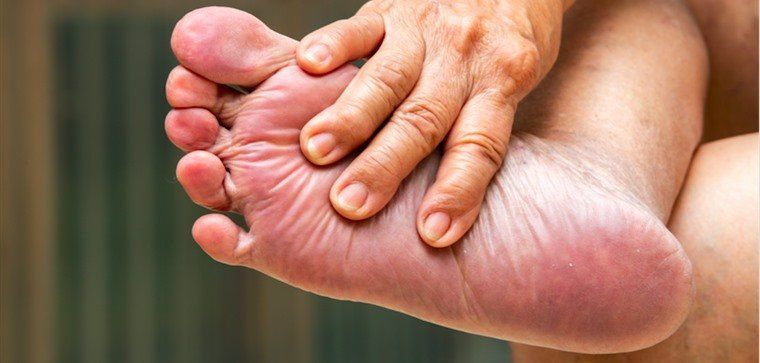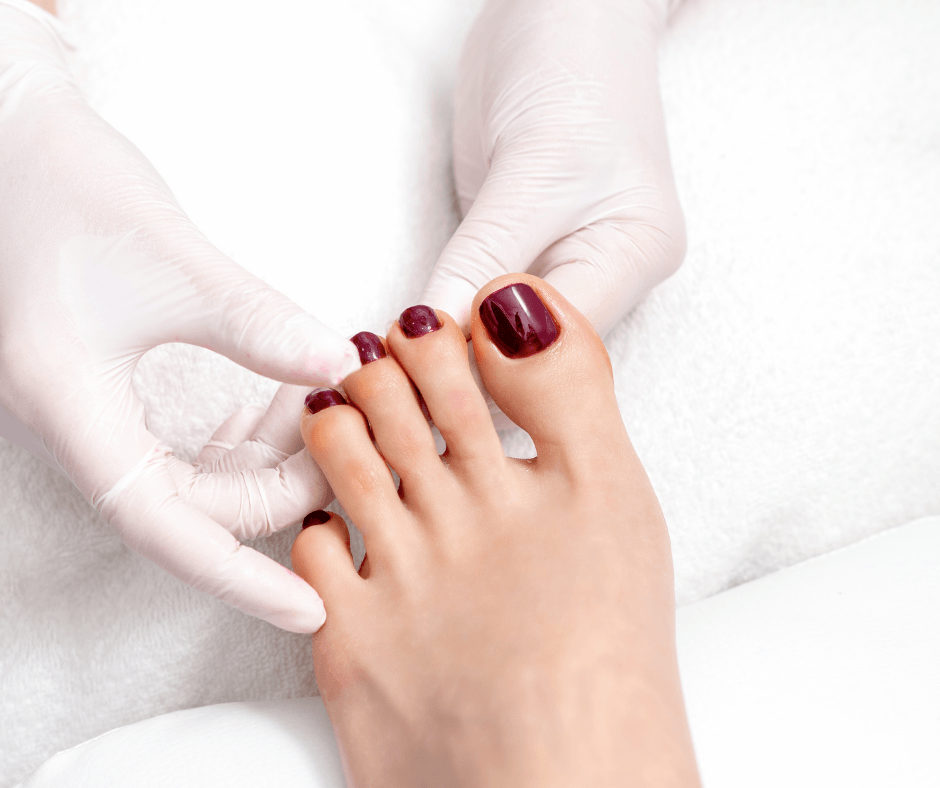Life Is A Balancing Act

Ever hear the phrase “Life is a balancing act”? As a podiatrist I definitely agree that everything we do is about keeping our balance. Every time we walk, it’s quite a feat of balancing. Young children walk with their feet wide apart, to maintain their balance. As people mature, they are able to walk with a gait that is much more narrow—they are in better balance—and when they run, they are balancing on a single support: first one foot, then the other, directly under the body.
As we age, we again spread our feet apart, like a young child. I can almost tell how old a person is by how far apart their feet are when they walk. I would suggest that there is a relationship between balance and many foot disorders.
Everything from the floor to the hips is a balancing act. The aches and pains people have are often secondary to the fact that one muscle group is stronger than another, and there’s an imbalance occurring. We use orthotics—prescription, custom-made shoe inserts—to balance the foot. The goal is always to balance the inside of the foot to the outside of the foot, and the rear foot to the forefoot.
The ankle joint is essentially a teeter-totter. For the woman who wears high-heeled shoes for 35 years, you can be certain that the back of her leg is tighter than the forefoot. When she changes her lifestyle—perhaps she retires from work—she may opt for a lower, more stable shoe. Often in such cases, the tension at the back of the leg becomes a serious problem as she begins to press down on the forefoot. Bunions, hammertoes, and calluses may result, because her forefoot to rear foot relationship is no longer in balance.
The goal is to maintain the rear foot to forefoot balance she has had for many years, and for some women that means continuing to wear shoes with a moderate heel. Often, later in life, a woman will move from a heeled shoe to bedroom slippers, and even go barefoot much of the time, and that truly creates a huge imbalance that is damaging to the feet. My recommendation in such cases is to retain a moderate heel, and come down from that very gradually, if at all.
Take into consideration when people lose toes, due, for example, to trauma or diabetes, it may result in a serious problem with their balance. Think of your foot like a three-legged stool. The legs of the stool are the heel, the fifth (little) toe, and the first (big) toe. The function of the toes, especially the big toe, is to help us balance, and to propel us forward during walking or running. The 14 bones of the toes are among the smallest in the body, and they are susceptible to problems—sometimes originating in childhood, and often the result of trauma. Unassisted walking is difficult with injury or absence of any of the toes, especially the big toe. There is actually a delicate balance between these three points of the “stool,” and when it is disrupted, the entire structure—the body—becomes unstable and wobbles.
We can and do build orthotics that change the balance points of the tripod, to accommodate loss as effectively as possible. An orthotic can be a big help, but in most cases a cane, walker, or some type of support is still necessary.
We see many patients who have lost toes to diabetes; diabetic neuropathy is a condition that is far too common, and amputation is too often the result. I saw a gentleman today who has lost all of the toes on one foot. We have built orthotics for him to help him with balance, but in the best circumstance the “tripod” is still unstable.
I talk a lot about the biomechanics of the foot, and to a large extent, this involves balancing the bony structure of the foot to the ground. When you balance your foot, you are balancing to a flat surface: the ground. Putting an orthotic between your foot and the ground changes the way the foot meets the ground. An orthotic is a balancing device.
I’ll say this every time I write, when you come in to see one of our doctors at Central Carolina Foot and Ankle, we’re going to listen to you first, then closely examine your feet, probably watch you walk, obtain x-rays or other diagnostic tests, and then explain to you what we think the problem is and how we think we can resolve it. We want you to understand why you have foot pain and we want the treatment plan to make sense to you. Because educated, informed patients usually do what it takes to get well. We figure we are in this together.
If you are experiencing pain while walking or other problems with your feet please call our office (919)477-9333 and let us help you start working on the solution!



